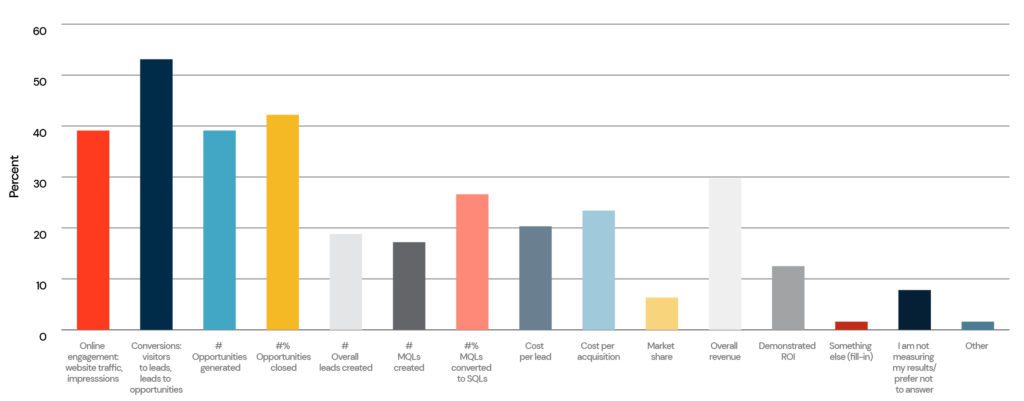
Maximizing Conversions: Insights and Best Practices Supply Chain Marketers
In today's competitive market, it's more important than ever for supply chain companies to measure the success of their marketing efforts effectively.
That’s a large part of our reason for conducting our 2023 Supply Chain Marketing Report, surveying companies to find out which metrics they commonly use to gauge their performance.
The results are in, and it’s no surprise that conversions from lead, to opportunity, all the way through to closed-won are at the top of the list. Read on for actionable insights designed to help marketers boost conversions at every stage.
If you are measuring your results, what metrics are you most focused on?

According to Gartner, marketing leaders often use the number of MQLs passed on to the sales department as a crucial indicator of demand generation success. However, it’s essential to understand that while a CMO may view MQL generation as advantageous, other departments may not see it as the most effective way to support the sales team’s bottom line. It’s important to note that an engaged lead doesn’t necessarily equate to a qualified one.
But before a lead shows intent or buying signals, it's probably just a lone website visitor. Here are some tips for converting website visitors to leads.
1. Provide valuable content
Above all, your content should be relevant to your target audience, which starts with knowing their pain points and challenges well (creating ideal customer profiles and updating your buyer personas can help here).
2. Use forms strategically
Forms should be short and easy to complete and only request the information necessary for lead qualification. While we suggest that all content be ungated, key pages should have a CTA and associated form to capture hand-raisers.
3. Leverage chatbots
Chatbots can help engage with website visitors and answer their questions in real-time, providing valuable insight into your customer and an additional vehicle for identifying your prospects. However, they aren’t for everyone. We suggest reading this HubSpot article on Creating a Chatbot Strategy to figure out if this strategy is right for you.
4. Stay active on social
Your social media accounts are a great way to showcase your expertise and your brand personality and drive your audience to your website to view the incredibly relevant content you’ve created for them, but be sure to get your leadership and sales team involved.
Once you’ve got your lead in the funnel, it’s time to evaluate it and warm it up to pass to sales. Marketing’s job is to identify intent signals and evaluate whether the lead is qualified based on alignment with your ICP (demographics and firmographics).
Once it passes your criteria, sales should be notified for follow-up. Here are a few tips to make this conversion successful.
1. Define the stages of your pipeline
It’s crucial to establish clear stages for your sales process. Neglecting to define what qualifies as a promising lead, and what triggers a move to the next stage of the funnel, is a common mistake made by sales and marketing teams. Once you’re on the same page, sales should feel more confident about the quality of leads they follow up on. Make sure to revisit these criteria and continue tweaking them as you go.
2. Collaborate with the sales team
While your sales leader should have a process in place to ensure that leads are followed up with in a timely and effective manner, marketing should collaborate with sales to ensure they have the relevant marketing materials to engage leads and close deals.
3. Use marketing automation
Marketing automation platforms are critical to streamlining the lead nurturing process and ensuring that leads receive relevant and timely communications, increasing the efficiency of the lead nurturing process.
4. Create an email sequence
Email sequences are a great way to automate follow-up with any website visitor who wants to receive information from you and help move them down the funnel. Keep your emails short, provide valuable content in each one, and make sure they flow. Check out this HubSpot article to get started.
5. Use lead scoring
Within your marketing automation platform, assign scores to leads based on their alignment with your ICP – including demographics, firmographics, and behavior, such as website visits, content downloads, and email interactions, to help prioritize leads for follow-up and increase the likelihood of conversion.
6. Personalize communications
Personalization can build trust and rapport with leads and increase the likelihood of conversion. Make sure any emails you send are customized with the prospect’s name, at the very least.
7. Use retargeting ads
Use retargeting to reach out to leads who have shown interest in your product or service to keep your brand top-of-mind.
Now that your sales team is working with the lead, marketers focus on helping those opportunities close. While sales is usually in the driver's seat here, marketing can still play a pivotal role, as outlined below.
1. Provide sales enablement materials
Sales enablement materials support the sales process. Developing brand-consistent case studies, product sheets, and competitive analyses can help sales reps answer common questions and objections and position your brand as a thought leader.
2. Nurture leads with targeted content
Email sequences and marketing automation play an important role here, as well. Turn the focus of your automated emails to this stage of the funnel to keep your SQL engaged.
Measuring marketing success is essential for supply chain companies to stay competitive in today’s market. Converting leads at each stage is critical to driving revenue, but as with most things, it takes time, effort, and a solid strategy. If you need help getting started, a marketing agency can bring a fresh perspective and expertise in the latest marketing trends and technologies – and by choosing a niche industry agency (like ours!), your marketing efforts can get underway quickly.
Let's Talk.
We partner with our clients to create compelling content, deploy demand and lead generation campaigns, and refine their overall conversion strategy (and much more). If you’re interested in partnering with a marketing agency to take your supply chain marketing efforts to the next level, get in touch.


